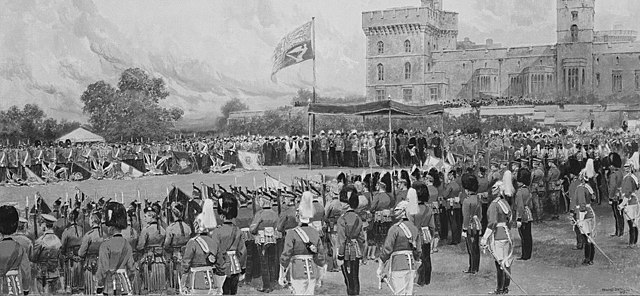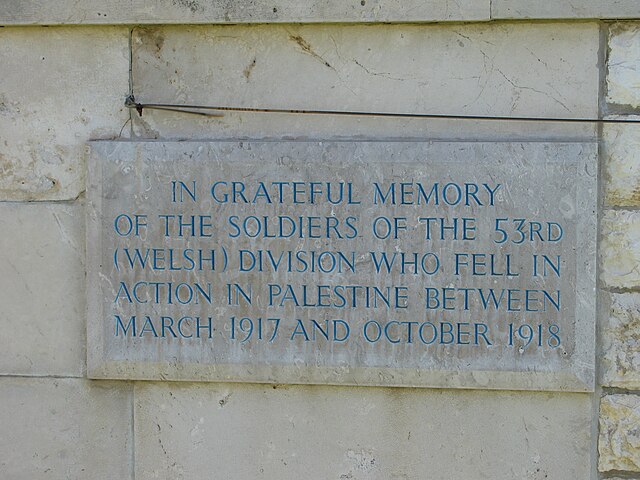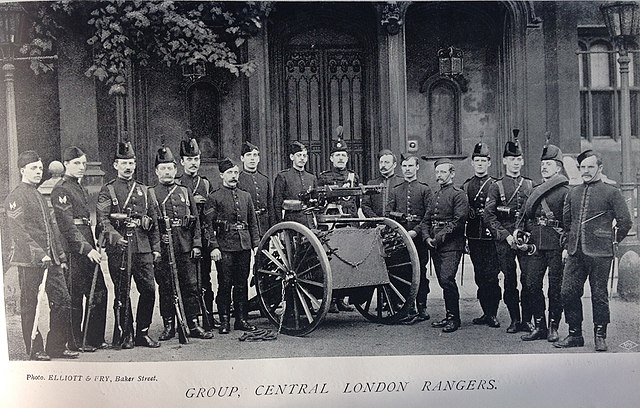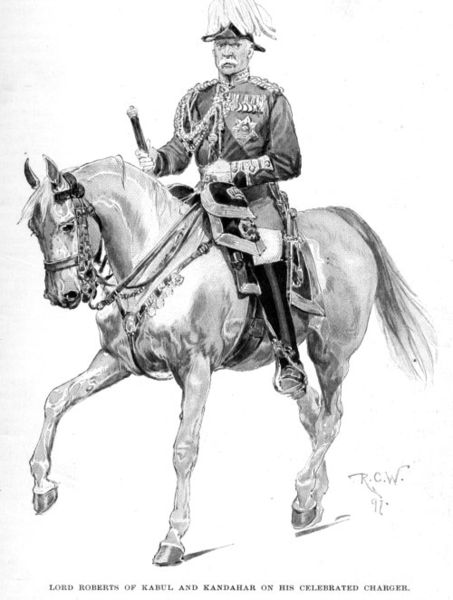53rd (Welsh) Infantry Division
The 53rd (Welsh) Infantry Division was an infantry division of the British Army that fought in both the First and Second World Wars. Originally raised in 1908 as the Welsh Division, part of the Territorial Force (TF), the division saw service in First World War, being designated 53rd (Welsh) Division in mid-1915, and fought in the Gallipoli Campaign and in the Middle East. Remaining active in the Territorial Army (TA) during the interwar period as a peacetime formation, the division again saw action in Second World War, fighting in North-western Europe from June 1944 until May 1945.
53rd (Welsh) Division commemoration plaque - Ramleh military cemetery.
Universal Carriers and motorcycles of the 1/4th Battalion, Welch Regiment, on manoeuvres at Keady in County Armagh, Northern Ireland, 22 July 1941.
With bayonets fixed, men of the 7th Battalion, Royal Welch Fusiliers charge down a bank on an assault course at Teddesley Hall, Penkridge in Staffordshire, England, 27 March 1942.
Fusilier W. Nodder of the Royal Welch Fusiliers writes home from his slit trench before the attack on Evrecy, Normandy, France, 16 July 1944.
The Territorial Force was a part-time volunteer component of the British Army, created in 1908 to augment British land forces without resorting to conscription. The new organisation consolidated the 19th-century Volunteer Force and yeomanry into a unified auxiliary, commanded by the War Office and administered by local county territorial associations. The Territorial Force was designed to reinforce the regular army in expeditionary operations abroad, but because of political opposition it was assigned to home defence. Members were liable for service anywhere in the UK and could not be compelled to serve overseas. In the first two months of the First World War, territorials volunteered for foreign service in significant numbers, allowing territorial units to be deployed abroad. They saw their first action on the Western Front during the initial German offensive of 1914, and the force filled the gap between the near destruction of the regular army that year and the arrival of the New Army in 1915. Territorial units were deployed to Gallipoli in 1915 and, following the failure of that campaign, provided the bulk of the British contribution to allied forces in the Sinai and Palestine Campaign. By the war's end, the Territorial Force had fielded twenty-three infantry divisions and two mounted divisions on foreign soil. It was demobilised after the war and reconstituted in 1921 as the Territorial Army.

Presentation of colours and guidons to 108 units of the Territorial Force by King Edward VII at Windsor Palace, 19 June 1909
Late 19th-century volunteers of the 22nd Middlesex Rifle Volunteers (Central London Rangers)
Richard Haldane, architect of the Territorial Force
Lord Roberts, fierce critic of the Territorial Force and strong proponent of conscription as a better alternative








